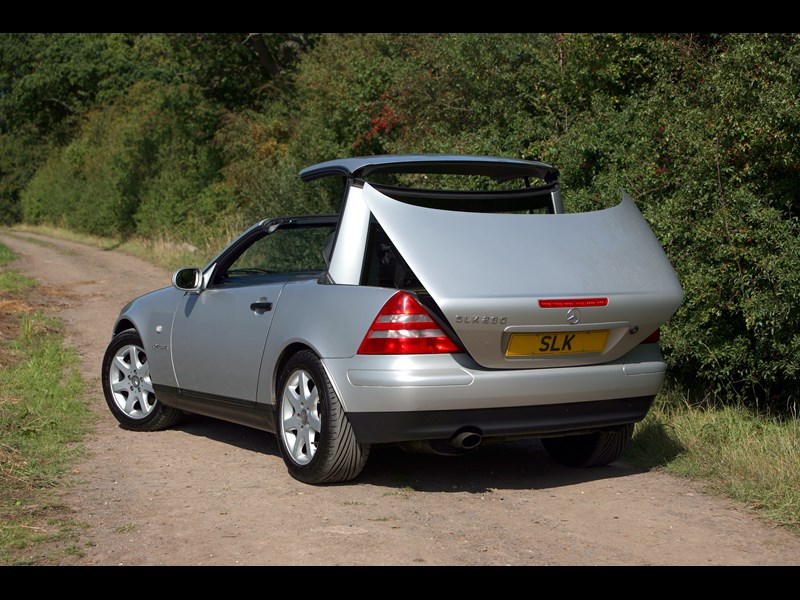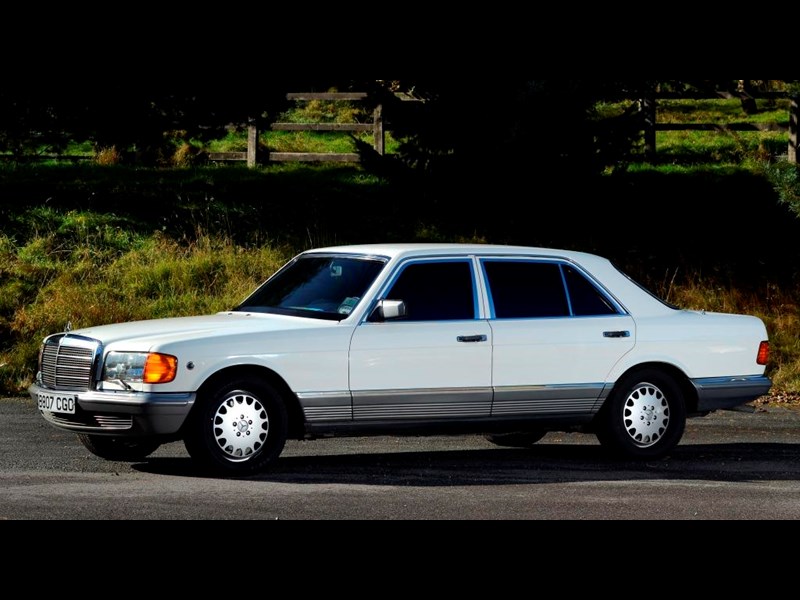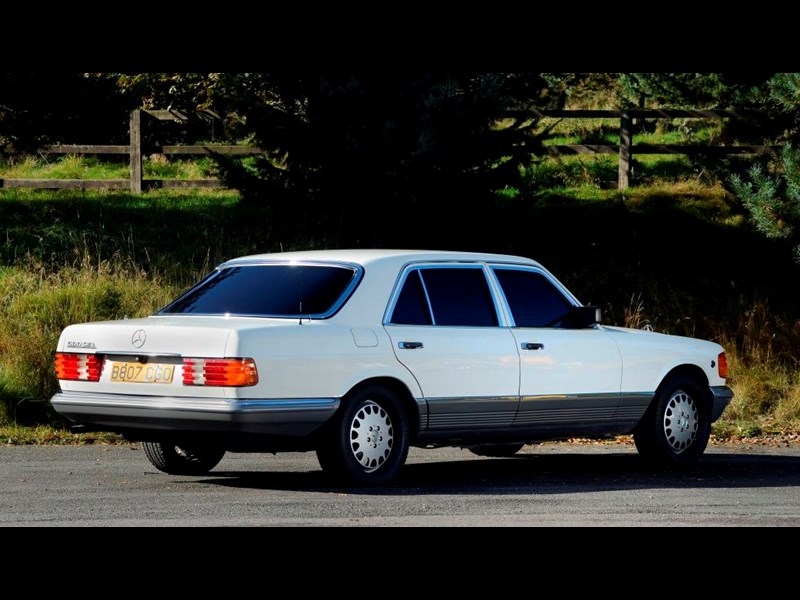Launched in 1981 the Mercedes Benz 500SEC was the initial flagship of the W126 Mercedes S-class range. Strictly speaking, as a Coupe the SEC is known as the C126, though in practice most enthusiasts forget such technicalities. Customers for new SECs would have included company directors, football managers and millionaires after something a little more subtle than the Royce – but nowadays they’re seriously cheap for what they are.
WHAT TO LOOK FOR
Bodywork
All panels are C126-specific; no saloon skins here. Wheel trims and alloy wheels are carried over – and the general style of the car is similar to the four door iants. Ribbed rear lights were designed to discourage the accumulation of dirt and little shields ahead of the door handles helped stop them from leaving filthy deposits on the hands of the chosen few. The A-pillars were braced to the bulkhead by steel rods, a device which ensured the car was solid enough to forego B-posts; as with every Mercedes coupe since the Sixties. The rear screen seal is a weak spot, causing rotten bulkheads by virtue of leaks – open the boot of any car you go to see and look up under the back window! Whilst round the back of the car you may as well check the condition of the rear screen itself. They’re available, but at a price.
Engines
Powered by a 5.0 litre variant of the Mercedes M117 V8, the 500SEC is more than ample for most drivers. Owners report that the engine is easy to maintain, reliable, and diagnosis of any issues is relatively straightforward. Spares are available from Mercedes Benz if required, but Merc spares don’t come cheap. If running a 126 on a budget we advise you find a local Mercedes specialist. If the car still has its original plastic radiator, chemicals used in some coolants can damage it. Many will have had them replaced, but either way the upper hose neck is known for failure.
Running Gear
Although SECs never got hydropneumatic suspension, and the swinging-caliper brakes are unique to SECs, most other mechanical parts are shared with the rest of the W126 range. This means they’re both tough and easy to source. Whilst the steering ratio was altered to give a more engaging feel, steering components are interchangeable.
Interior
Not much wood, but lots of leather – check every inch for nicks, tears, or other damage. Retrims are not cheap. Many cars came with velour, which is less desirable but less prone to tears. C126s are packed full of toys – make sure it all works; the more broken gadgets the costlier the car will be to put back to how it should be. Dashboards are shared with the W126 saloons, though the revcounter replaced the analog clock in saloon models; a digital timepiece in the centre of the speedo serving to show the driver just how much time he’d made up. The seats are not common to the saloons, with the fronts featuring a pneumatic locking system to hold the squab up whilst the car was in motion as well as full electric operation. Many were trimmed in velour, but leather trim makes a car easier to sell on later.
OUR VERDICT
Because you want to treat yourself. An SEC will make you feel like a lottery winner, for far less than you’d think. Being an old Merc, the sense of solidity is ever-apparent, you feel indestructible in one of these old barges. People say Mercs are competent but bland – and yet a large, two door superbarge seems to confound this view. Could it even have a soul? We think so. It’s certainly amongst the bargains of the century.
What Should I Pay?
Project £750
Usable £3000
Nice £8000
Concours £9750
Vital Statistics
Engine – 4973cc, V8, OHC
Power - 295bhp@5000rpm
Torque - 294lb/ft@3750rpm
Top Speed – 141mph
0-60mph – 6.8 seconds
Economy – 18 mpg
Gearbox – four speed auto




















































































